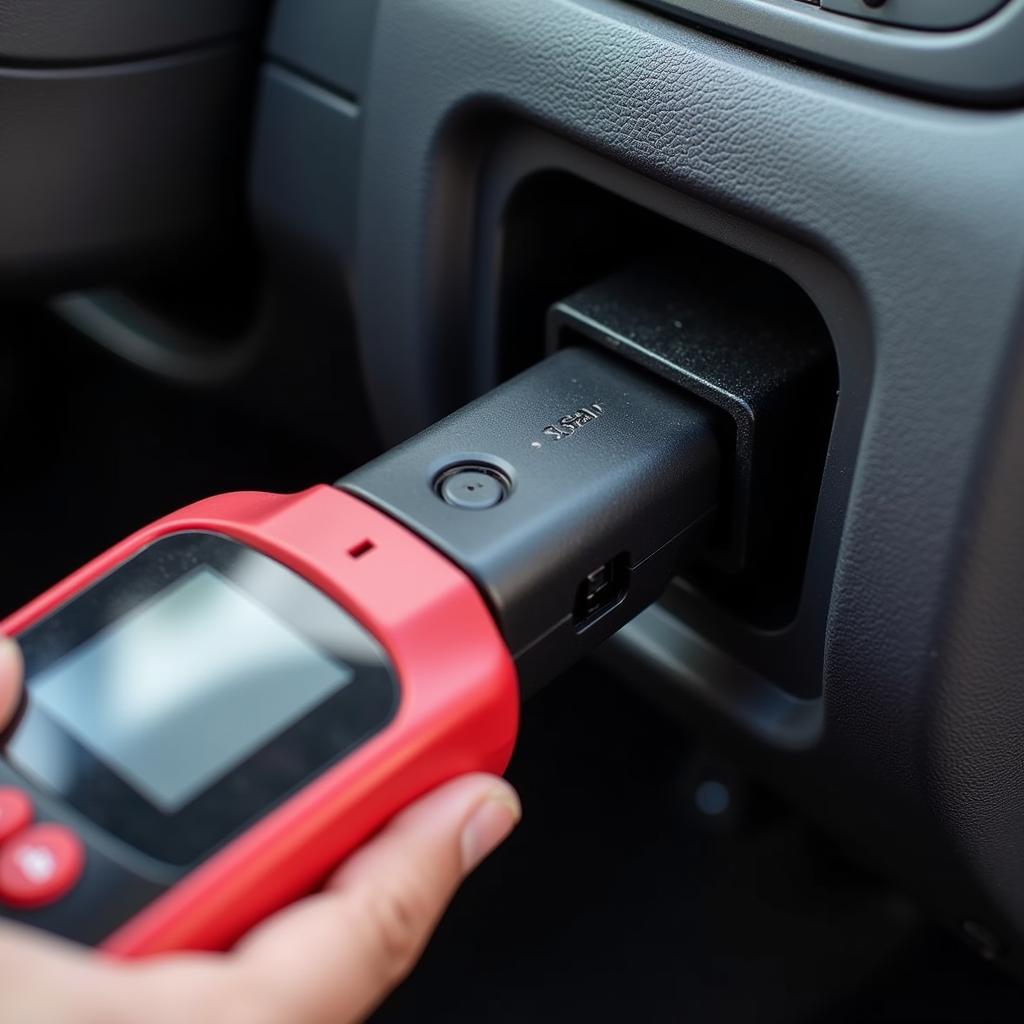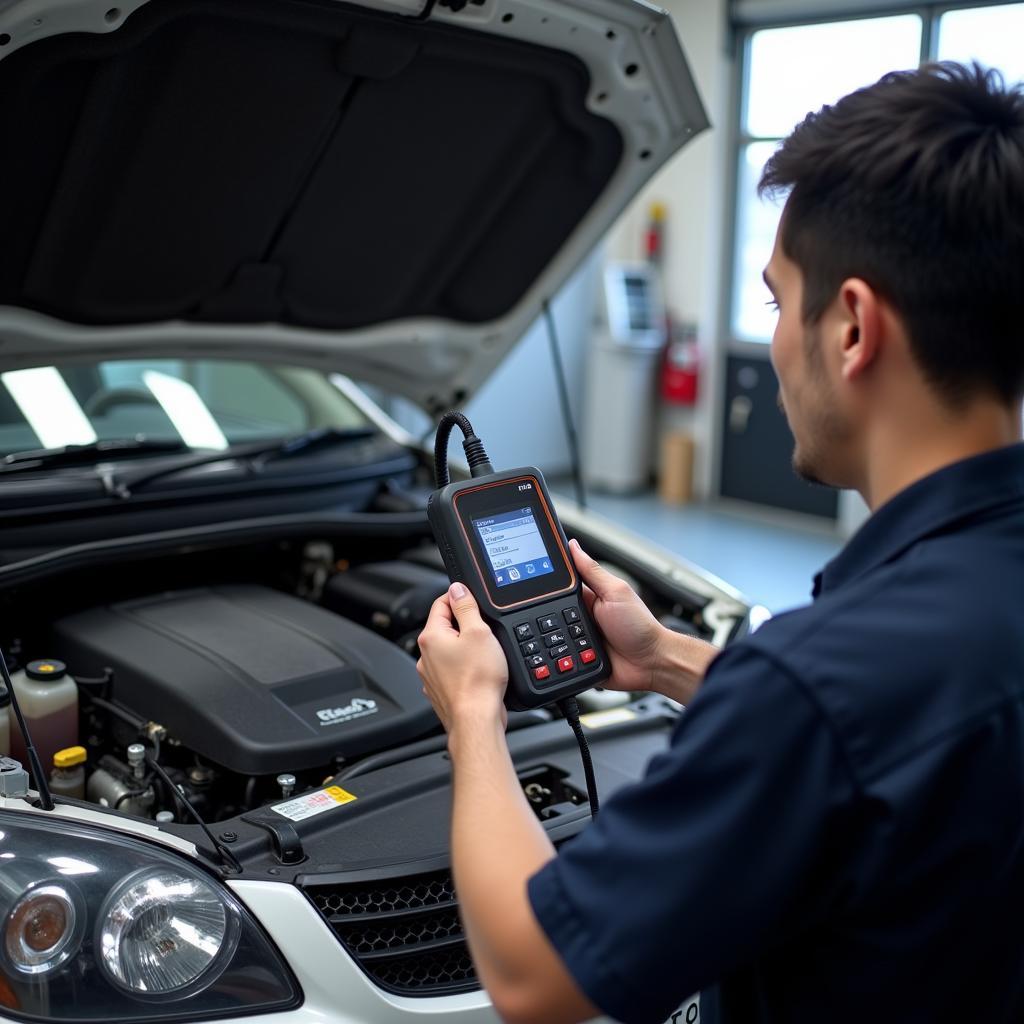Understanding the inner workings of your Japanese car doesn’t have to be a mystery. With the right Japanese Car Diagnostic Tools, you can unlock the secrets hidden within your vehicle’s computer system and get to the root of any issue. Whether you’re a seasoned mechanic or a car enthusiast looking to delve deeper into DIY repairs, this comprehensive guide will equip you with the knowledge to choose the best tools for your needs.
Why Choose Japanese Car Diagnostic Tools?
Japanese car manufacturers are renowned for their advanced technology and engineering prowess. As vehicles become increasingly sophisticated, it’s essential to have diagnostic tools specifically designed to communicate with their onboard systems. These specialized tools offer a range of benefits, including:
- Accurate Diagnostics: Japanese car diagnostic tools are tailored to interpret the specific protocols and data streams used by Japanese automakers. This ensures precise readings and reliable fault codes, eliminating guesswork and saving valuable time and effort.
- Comprehensive Coverage: From reading and clearing engine codes to analyzing real-time sensor data, these tools provide a comprehensive suite of functions to diagnose and troubleshoot various systems, including engine, transmission, ABS, airbags, and more.
- User-Friendly Interfaces: Many Japanese car diagnostic tools feature intuitive interfaces, making them accessible to both professionals and DIYers. Whether it’s a handheld scanner or PC-based software, you’ll find options with clear menus, graphical representations, and easy-to-understand data displays.
Key Features to Consider
When selecting Japanese car diagnostic tools, consider these essential features:
- Vehicle Compatibility: Ensure the tool you choose is compatible with the make, model, and year of your Japanese car. Some tools specialize in specific manufacturers like Toyota, Honda, or Nissan, while others offer broader coverage.
- Functionality: Determine the level of detail and diagnostic capabilities you require. Basic code readers can retrieve and clear fault codes, while more advanced scanners offer live data streaming, bi-directional control, and special functions like key programming or module coding.
- Connectivity: Consider how the tool connects to your vehicle. Options include wired connections (OBD-II), wireless Bluetooth, or USB interfaces.
- Software Updates: Regular software updates are crucial for maintaining compatibility with the latest vehicle models and accessing new features or bug fixes. Check if the manufacturer provides free or paid updates.
 Connecting a Japanese Car Diagnostic Tool
Connecting a Japanese Car Diagnostic Tool
Types of Japanese Car Diagnostic Tools
The market offers a wide array of Japanese car diagnostic tools to suit different needs and budgets:
- OBD-II Code Readers: These entry-level tools are affordable and perfect for retrieving and clearing basic engine fault codes. They provide a starting point for diagnosing engine-related problems.
- Handheld Scanners: Offering more advanced features than basic code readers, handheld scanners provide access to multiple vehicle systems, live data streams, and in some cases, bi-directional control for activating components.
- PC-Based Diagnostic Software: For the most comprehensive diagnostics and advanced functionalities, PC-based software offers unparalleled depth. These tools often require a separate interface device that connects to your computer and the vehicle.
 Mechanic Using a Diagnostic Scanner on a Japanese Car
Mechanic Using a Diagnostic Scanner on a Japanese Car
Popular Japanese Car Diagnostic Tool Brands
Several reputable brands specialize in manufacturing high-quality diagnostic tools for Japanese vehicles. These include:
- Denso: Known for its original equipment (OE) expertise, Denso offers a range of diagnostic tools trusted by professionals worldwide.
- Launch Tech: Launch Tech provides a diverse selection of diagnostic tools, including handheld scanners, PC-based systems, and more, catering to various budgets and needs.
- Autel: Autel is a leading innovator in the automotive aftermarket, offering a wide array of diagnostic and analysis systems known for their user-friendly interfaces and advanced features.
Choosing the Right Tool for You
Selecting the right Japanese car diagnostic tool depends on your specific needs and expertise:
- DIY Enthusiasts: For basic maintenance and troubleshooting, an OBD-II code reader or an entry-level handheld scanner provides a cost-effective solution.
- Home Mechanics: If you tackle more involved repairs, a mid-range handheld scanner with live data streaming and bi-directional control will enhance your diagnostic capabilities.
- Professional Technicians: For comprehensive diagnostics, advanced programming, and access to the latest vehicle systems, a high-end handheld scanner or PC-based system is essential.
Conclusion
Investing in the right Japanese car diagnostic tools empowers you to take control of your vehicle’s maintenance and repairs. By understanding your needs, exploring the available features, and choosing from reputable brands, you can unlock the ability to diagnose and resolve issues with accuracy and confidence, saving time and money in the long run. Remember to always refer to your vehicle’s service manual and consult with a qualified mechanic for complex issues or before attempting any repairs beyond your skill level.

Leave a Reply